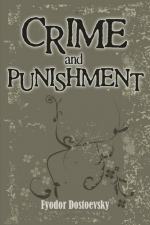|
This section contains 1,078 words (approx. 4 pages at 300 words per page) |

|
Epilogue for Crime & Punishment in Relation to the Rest of the Text
Summary: This essay explores wether or not the epilogue of Crime and Punishment by Fyodor Dostoevsky is consistant with the rest of the novel. Examines religious symbols used as foreshadowing as well as his references to suffering for atonement.
The epilogue to Fyodor Dostoevsky's Crime and Punishment is criticized by some as being inconsistent with the rest of the novel. However, through looking at the religious imagery, Dostoevsky's constant references to atonement through suffering, and at elements of Raskolnikov's dual personality it can been seen that the epilogue does indeed make sense when compared to the main body of work.
Throughout the novel Dostoevsky bombards the reader with religious symbolism. For example take the story of Lazarus which Sonia reads to Raskolnikov in Part 4 chapter 4. The story of Lazarus is about a man who dies and is later resurrected by Jesus. Lazarus represents Raskolnikov who, in a sense, died spiritually after he commits the murder of the Pawn Broker and her sister Lizaveta. Dostoevsky chose this story on purpose to foreshadow the events that happen in the epilogue, that Raskolnikov will be saved by God. Another instance...
|
This section contains 1,078 words (approx. 4 pages at 300 words per page) |

|


